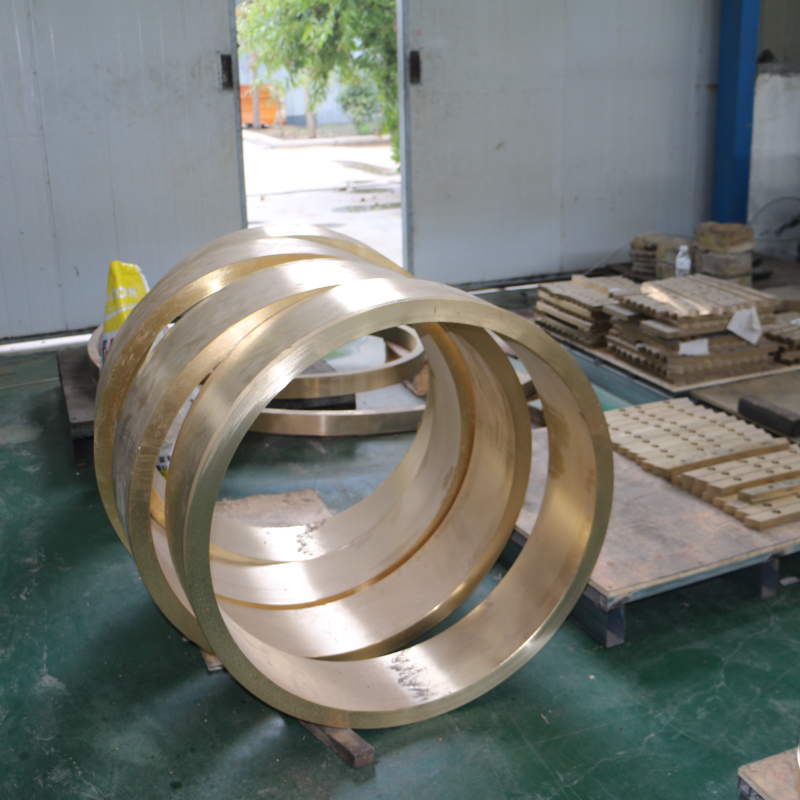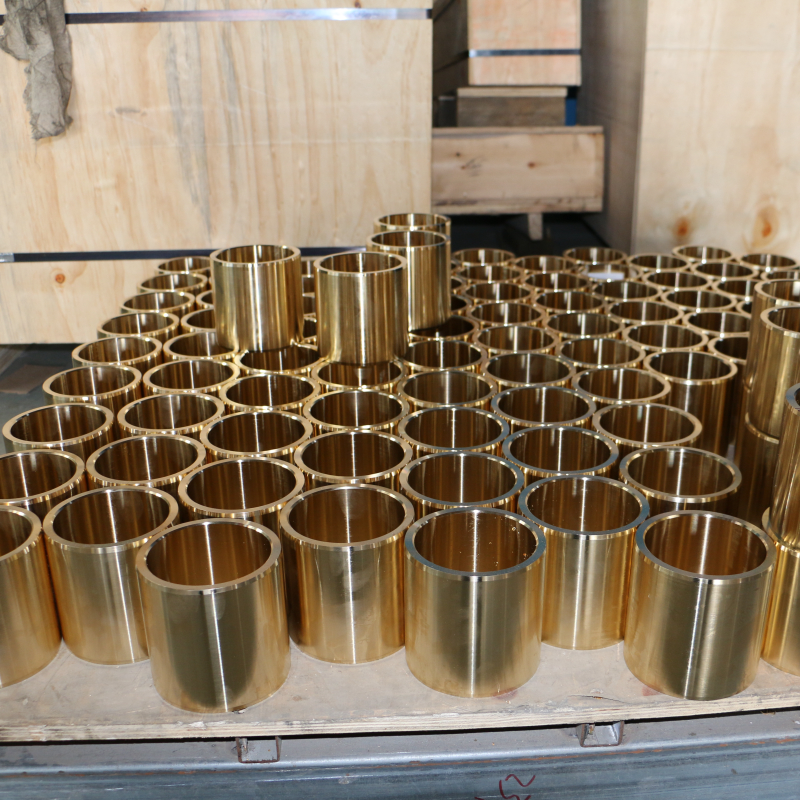The working principle of the crane copper bushing is mainly based on sliding friction and lubrication mechanism as follows:
Sliding support and relative motion:
Support role: crane copper bushing installed in specific parts of the crane, such as the pulley shaft, slewing bearing, lifting arm connection parts, traveling wheel axle and other positions. In these parts, the shaft or other moving parts need to rotate or reciprocating motion in a relatively fixed structure, the copper sleeve plays a role in supporting the shaft, so that the shaft can be stable in its internal rotation or movement, bear the radial load and axial load from the shaft (to a certain extent), to ensure the normal operation of the crane components.
Relative motion: When the shaft rotates or moves inside the copper bushing, relative sliding will occur between the sleeve and the shaft. As the inner diameter of the copper bushing is slightly larger than the outer diameter of the shaft, there is a certain gap between the two, which enables the shaft to freely carry out relative movement in the copper sleeve, but not too loose resulting in the position of the shaft shifting or shaking.

Lubrication friction reduction:
Boundary lubrication: in the crane just started running or low-speed operation, due to the lubricant has not been fully distributed or formed a stable oil film, at this time between the copper bushing and the shaft in the boundary lubrication state. Copper bushing itself has a certain self-lubricating material, its surface can adsorb a thin film of lubricant, this layer of oil film can reduce the direct contact between the copper bushing and the shaft, reduce the coefficient of friction, reduce friction and wear.
Fluid lubrication: when the crane running speed is faster or the lubricant supply is sufficient, fluid lubrication will be formed between the copper bushing and the shaft. The lubricant is brought into the gap between the copper bushing and the shaft under the action of pressure, forming a layer of continuous oil film, which completely separates the surfaces of the copper sleeve and the shaft, so that the friction between the two becomes the friction within the liquid. This fluid lubrication state can greatly reduce the friction resistance, reduce wear and tear, and due to the existence of the oil film, but also can absorb and buffer the vibration and shock generated in the process of rotation or movement of the shaft, improve the smoothness and reliability of crane operation.

Solid lubrication (part of the special copper bushing): some special crane copper bushing, such as graphite copper bushing, internal graphite particles and other solid lubricants. In the sliding friction process, graphite particles will be partially transferred to the friction surface of the shaft and copper bushing, forming a stable solid lubrication diaphragm. This layer of solid lubrication diaphragm can prevent the direct adhesive wear of the shaft and the copper bushing, even in the lack of lubricant or poor working environment, but also to maintain good lubrication performance, especially for high temperature, high load, underwater and other special working conditions.
| Previous:Why cranes choose copper bushings made of copper? | Next:How to choose the right lubricant to minimize copper bushing wear? |




 Copyright © 2022
Copyright © 2022